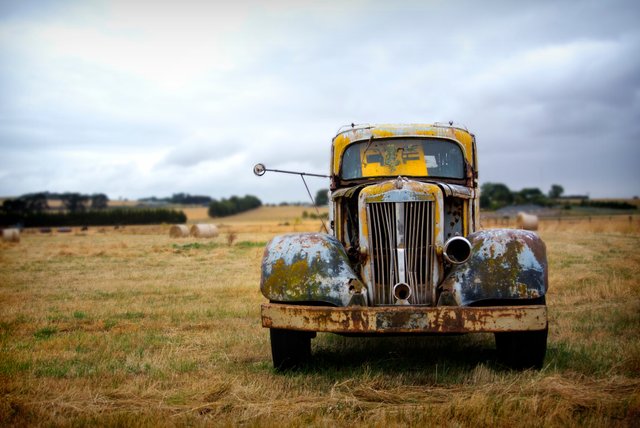Listing the priorities of his life, God came first, family second, and then his company. God wanted him to worry about others, Cettie pleaded with him to replace the kerosene lamps, and the Standard Oil Company directors warned him not to buy the Lima oil fields. The result was a parlor smelling like skunk oil, sooty lights, and guests detesting a visit.
Electricity powered bright, clean light and he appreciated its harmony. The failure in eliminating the sulfur from the Lima oil frustrated him. With the sulfur gone, kerosene would never produce a skunk smell. Cleanliness was next to godliness and nothing about his kerosene reminded anyone of cleanliness.
The next morning he sent a telegram requesting a meeting with Thomas Edison. The investment in Lima oil proved fruitless. To please his industrialist curiosity, he needed a find a new way of doing business.
Edison almost refused the meeting. He had the superior product. But the reputation of John D. Rockefeller as a man always looking to save a cent made him reconsider. Rockefeller could help him expand the use of electricity beyond a parlor trick. Electric motors could power industry, move goods, and better everyone's lives.
The Edison-Standard Illuminating Company expanded from New York to St. Louis. Northeast dams delivered power to thousands of homes converted from kerosene to electricity. Rockefeller brought customers glad to ditch the smell of skunk for clean lighting. The combined company abandoned the Lima, Ohio oil fields closing a chapter on the use of oil for industry. Electric motors made mass production a reality. The air of the cities seemed as clean as the countryside.
It turned out there was another problem electricity could solve. Across the cities, hundreds of horses moved people and goods. The mess and smell from these horses outstripped all the gains made in cleaning up the air. It especially bothered Rockefeller who prided himself on pureness and order. In Detroit, an employee named Henry Ford suggested an electric powered vehicle. If Ford could make this idea a success, Edison-Standard could solve the problem of the horse.
Edison-Standard agreed to build a new factory to produce electric vehicles by the thousands. Much like a meat packer, electric vehicles moved down an assembly line. Workers added wheels to the frame and batteries behind the electric motor. Ford delivered each vehicle to people more than happy to leave their horses in the stall.
Soon electric vehicles lined city streets and the animal odor left the air. People could see for miles encouraging them to travel father from the city to the country. Electric filling stations doubled the travel range of an electric vehicle. But, filling a battery with electricity often took 12 or more hours making cross-country travel impossible. Edison-Standard worked to develop better nickel-iron batteries, and even experimented with lead-acid batteries, but the range problem proved too high a wall to climb. Electric vehicles were great for short distances, but impractical for traveling from city to city.
In Dayton, Ohio, two brothers believed they could expand the distance of the electric vehicle by taking to the air. The Wright Brothers invented an airplane to soar over mountains and valleys. They believed the wind could make travel to various electric filling stations more practical. Unfortunately, the electric batteries were too heavy making the airplane unable to glide. Orville Wright concluded their plane would never leave the ground with so much weight.
Wilbur Wright sought the advice of Edison and Rockefeller to reduce the size of the electric batteries. Edison-Standard scientists redoubled their efforts yet reducing battery size reduced power output. The problem remained unsolved.
In Milwaukee, Wisconsin, a young man named William Harley invented a small fuel engine designed for a pedal bicycle. It could generate massive amounts of power. It also allowed the small bicycle to travel endlessly. This engine had the potential to lift the airplane from the ground. At Kitty Hawk, North Carolina, the Wright Brothers flew over the sand with a fuel-powered engine.
The use of fuel to extend the distance vehicles traveled intrigued Rockefeller. Fuel engine enthusiasts represented a new source of revenue despite the foul exhaust. To solve the sulfur problem, he once again turned to solving the problem of the Lima oil fields. Scientists mixed the oil with various metal oxides eliminating the sulfur smell.
Over the next few years, the traveling motorist demanded fuel-powered engines. This cut into the production of electric vehicles. Edison and Rockefeller met demand by producing more fuel vehicles and fewer electric ones. The Edison-Standard Illuminating Company never solved the battery storage problem. The demand for oil returned as motorists traveled across the county. Oil drillers found new sources in Texas and California. The Edison name was soon dropped in favor of the original name of the Standard Oil Company.
Electric vehicles enjoyed a small period of transportation history. The clean use of electric power made travel desirable for those who breathed the air. And it is clear, electric vehicles would have dominated transportation if Edison-Standard had solved the battery size problem. In the end, the demand by motorists to travel the back roads of America made electric vehicles obsolete.

Your post has been manually curated by the Many Voices Project. The MV Project exists to promote diversity and difference on the blockchain. If you would like to support our work and that of our Founder @sapphic Please consider voting for her witness via steemconnect
Downvoting a post can decrease pending rewards and make it less visible. Common reasons:
Submit